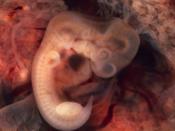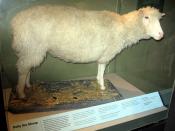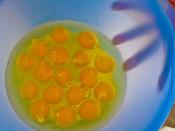INTRODUCTION In February 1997, at the Roslin Institute, Dr Wilmut and his colleagues made it known to the world that they had successfully cloned a lamb. Using a Scottish Blackface ewe's enucleated oocyte, they injected a Finn Dorset nucleus to form a new cell. Soon after the new cell was placed into a surrogate mother, it gave birth to a lamb named Dolly. This was thought of as being scientifically impossible to clone an adult mammal, but the product of Dolly proved otherwise.
THE CREATION OF DOLLY The first step to cloning Dolly was taking a cell from a Finn Dorset ewe and placing it in a culture where there was very little concentrations of nutrients, so the cell would starve and stop dividing. The second step was to take an unfertilised egg cell from a Scottish Blackface ewe and suck the nucleus out, leaving only the egg shell and all the other cellular machinery necessary to produce an embryo.
Step three was placing the two cell next to each other and an electric pulse caused them to fuse together. Another pulse then starts cell division. They repeated this process 277 times.
From previous experience, Dr Wilmut and his team knew that embryo transfers didn't always work. The embryos may have died for many reasons, and because of this the researchers added one more step into the process of cloning Dolly. A zygote is expected to have divided approximately four times, producing 16 cells, a few days after normal fertilisation. In this stage of development the embryo is called a morula.
After this stage the zona pellucida ("ÃÂegg shell') begins too disappear and as the cells continue to divide, fluid starts to enter the centre of the cells. From this a hollow ball is formed with cells on the outside...


